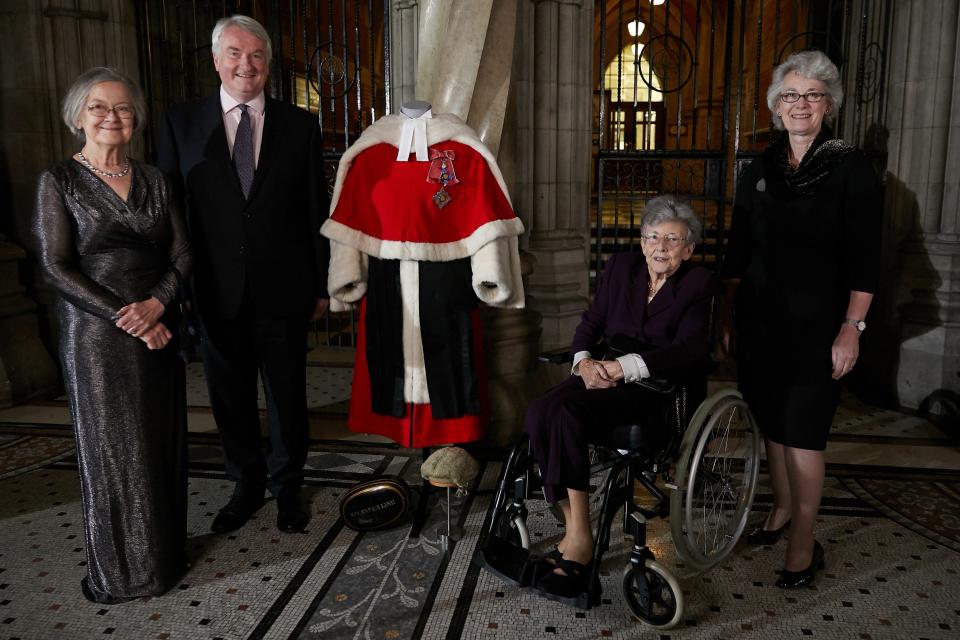Dame Margaret Booth, judge who made lasting contributions to divorce and family law – obituary

- Oops!Something went wrong.Please try again later.
Dame Margaret Booth, who has died aged 87, was only the third woman to be appointed a High Court judge.
Like Elizabeth Lane and Rose Heilbron before her, she was assigned to the Family Division, but unlike her predecessors, both of whom had been criminal barristers, Booth was an expert in family law, a specialisation adopted somewhat reluctantly due to prejudice at the Bar when she began practising in the 1950s.
It was an area in which she quickly excelled, however, and she made lasting contributions to the law concerning children and divorce. She chaired the committee that called for no-fault divorce in the mid-1980s but was dismayed by the slow pace of implementation: the change is due to be enacted later this year under the Divorce, Dissolution and Separation Act.
She was also involved in one of the first cases concerning the legal status of a transgender person, in which a person’s “blueprint” was held to be what mattered – “what you were born with and which you couldn’t change”.
Booth later wondered about the rightness of that judgment but she urged a “proper debate” before the introduction of proposed changes to the Gender Recognition Act to enable people to self-identify their gender. She used the example of a man pretending to be a woman in order to gain access to a woman’s changing room to illustrate “how an ill-considered law reform could be abused to the detriment of women”.
Margaret Myfanwy Wood Booth was born on September 11 1933 and educated at Northwood College and University College, London, where she read Law.
She won a Middle Temple scholarship and was called to the Bar in 1956, but struggled at first to find a tenancy: “Heads of chambers would just say, ‘No, we don’t take women here,’ ” she remembered. “If you made a terrible fuss you were gone forever, so that was not the way to play it.”

For 18 months she survived by lecturing and writing law reports. Her principal interest was in commercial law, but the only sets taking on women tended to do crime and divorce, so she ended up practising in family law by default.
“You just put your head down and got on with it,” she recalled. “It was terribly boring to start with – doing undefended divorces at two and a half guineas a time before judges who’d been practising in the colonies.”
She took Silk in 1976 and three years later was appointed to the High Court bench, where she was known for dispensing justice with clarity, humanity and a ready sense of humour.
Although then unmarried, she avoided the unfortunate implication of being called “Miss Justice” by becoming “Mrs Justice” instead. At one stage she was the only woman among 80 High Court judges, and when away from home on circuit she found Judges’ Lodgings to be archaic bastions of male stuffiness.
She recalled being ticked off once by a senior judge for “ordering a bowl of raspberries because I was so sick of not having any fresh fruit”. On another occasion, her Marks & Spencer housecoat was disparaged as resembling a dressing gown – a remark that infuriated her but did nothing to change her wardrobe.
After 15 years on the bench Booth decided she needed a change, and in 1994, aged just 60, she retired to devote her time to a range of charitable organisations.
As chairman of the National Family and Parenting Institute, a charity seeking to make the country more “family friendly”, she lamented in 2002 that Britain’s family law and courts were decades behind Australia, New Zealand, the United States and Norway – especially when it came to involving fathers in their children’s upbringing.
“It is really a shame,” she said, “that this country is so insular and does not learn from what others have been doing successfully for so long. I believe quite profoundly … that the time has come to remove our blinkers.”
For the last 15 years of her life, Dame Margaret suffered from Parkinson’s disease and eventually depended on a wheelchair, all of which she bore with characteristic fortitude and cheerfulness.
She married, first, in 1982, Joseph Jackson, QC, the outstanding divorce lawyer of his generation, whose clients included John Lennon, Peter Sellers, Sir Peter Hall and Sir Stirling Moss. He led her in several cases and they co-edited the definitive textbook Rayden on Divorce. He died in 1987 and she married, secondly, in 1993, Peter Glucksmann; he died in 2002.
Dame Margaret Booth, born September 11 1933, died December 31 2020

